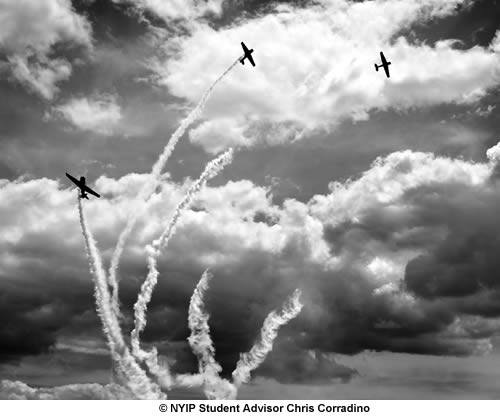Photo by NYIP Photography School Graduate Evaldus Darskus

NYIP Graduate Evaldus Darskus of Kaunas, Lithuania has contributed this month's photograph, and it appears to have been taken in a bazaar in Istanbul, Turkey. The braziers, incense burners, lamps, etc. help to establish the location of the scene.
As you know, we strongly recommend the application of NYIP's Three Guidelines for Great Photographs to every picture. The third Guideline stresses simplification of the picture by eliminating the unnecessary elements. But this is a very complex study. Does its structure negate our third principle?
Not really. Any photograph can comprise numerous elements or few or merely some in-between number. It is not the number of items that matters, for one can photograph one bee on a flower or six hundred bees at a hive (heaven forbid!). Still, it is necessary to eliminate what must be done away with while leaving intact umpty-umph other things.
Let us turn now to the focusing of attention on the subject (or subjects). The photographer, Darskus, used the steps in the bazaar as leading lines or converging lines that direct one's attention to the descending individuals. Furthermore, he has framed the people with the braziers and lamps. In addition, he has rendered much of the artifacts in silhouette or semi-silhouette. That effect of dark against light tones adds considerable emphasis and a strong three-dimensional feeling. One is reminded of the manner in which both Toulouse-Lautrec and Degas used dark foregrounds to call attention to lighter backgrounds where the more important subject matter lay.
In the world of photographic artists the above-mentioned technique played a significant role. Consider the beautiful photographs of such luminaries as Frederick Evans and his English cathedrals, and Alvin Langdon Coburn's "Vortographs." And, in modern times, the brilliant work of the most famous NYIP alumnus, W. Eugene Smith. Gene's magnificent use of dark foregrounds can be seen in many of his series such the one on Albert Schweitzer, the Pittsburgh scenes, the study of the Spanish village, and his world-famous Minimata series about the effects of mercury poisoning in Japan.
I think that one of the more interesting aspects of photographing crowds of people is the unity found within the apparent disunity. It is one thing to photograph the 2nd Regiment of the 101st Airborne Division (an old Army outfit of mine); everyone lined up in parade formation, everyone looking essentially the same. But it's another thing to photograph random large groups such as this one in Darskus' picture of an Istanbul bazaar. In such a photograph the grouping seems disorganized, but there actually are patterns — little knots of people bunched together (perhaps friends or relatives) and yet clearly separated from other groups. Hence, unity with the framework of apparent disunity!

I mentioned before both Toulouse-Lautrec and Degas. There is yet another aspect related to Impressionism here. Note the fact that the photograph is unsharp throughout. It probably was due to camera shake and slow shutter speeds due to poor light. But let's give the photographer the benefit of the doubt. The softness could have been deliberate. The photographer may have felt that the sense of airy impressionism was more to be desired than razor-sharp rendition. In other words, more of an appeal to our imagination rather than dead-on factual rendering. It's a possibility, no?
Alfred Stieglitz and his protégé Eduard Steichen both employed soft focus lenses in their earlier days. Both men eventually changed their approach and began to produce much sharper photographs. Stieglitz once argued that we really do not see the world sharply. Rather, there is often a sense of fuzziness Stieglitz and Steichen both altered their technique, and Steichen even anglicized the spelling of his name (Eduard to Edward).
So, as the sun sinks slowly in the Bosporus let us leave the Golden Horn of Istanbul. Maybe we'll come back some day.






